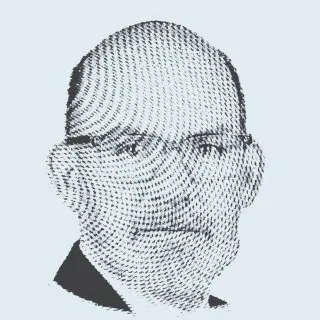Many questions have been posed about the nature and structure of Iran’s political system, its present and future. These major, complex, and sensitive questions are valid. Some have more than one answer, while others are difficult to answer at all. The victory of Masoud Pezeshkian, a puzzling reformist who conducts himself conservatively and could also be labeled a fundamentalist reformist, at a challenging time for Iran domestically and internationally, tells us several things.
Pezeshkian’s ascension to the presidency also affirms how Iranian regime, which succeeded in engineering the structure of political authority in the previous presidential elections held in 2021, has failed in engineering society. It also shows that the regime failed to re-impose uniformity within the regime but managed to accommodate a degree of political pluralism.
However, behind political pluralism lies ethnic pluralism. The Iranian nation is composed of several different groups, and non-Persian minorities turned out in large numbers during these elections, forcing the regime to recognize Iran’s diversity to an extent. The regime thus allowed- not because it was forced to but out of self-interest- Masoud Pezeshkian to be elected. The fundamentalist conservative reformist with an Azeri father and a Kurdish mother belongs to two minority groups. Pezeshkian, who openly acknowledges his multiple ethnic, linguistic, and cultural identities performed best in the Arab Ahwaz regions. His mixed minority background will impact his political, social, and civic posture and positions as president, and his background could compel the regime to think twice before besieging him or preventing him from implementing some of the policies he had promised.
Recognizing his victory might compel the regime to acknowledge his sub-identities, as they are not unique personal but reflect some of the essential factors behind the regime's crisis, including its political, ideological, and nationalistic centralization, as well as its relationship with the peripheries that have imposed their views on the center.
During or before the elections, the revolutionary regime became aware of two difficulties. First, it cannot confront the dynamism of Iranian society. The clampdowns against all forms of dissent have failed to compel individuals, communities, or movements to acquiesce. Despite the frustration with the grand experiments and prominent figures, and their failure to put their programs into action, Iranian society has maintained its vitality, redefined its pluralism, and demonstrated its resilience once again.
The second and more serious difficulty the authorities are facing emerged when their attempt to impose uniformity failed to protect the regime. Instead, it revealed its flaws and created threats. The contradictions of this uniformity quickly exploded and came to light in less than three years- the period between the engineering of the election of former President Ebrahim Raisi and his passing.
This brief period was enough to ignite intra-regime conflicts. The infighting will contribute to shaping the future and nature of the regime, as well as playing a role in determining its longevity. The facade of coherence and balance between the military and ideological factions of the loyalist camp masked acrimonious competition for positions of power during this transitional phase, which will eventually weaken both factions. The past three years have been defined by domestic and international failures. These failures began the Mahsa Amini crisis and its significant impact on Iranian society and the regime. Then came international challenges that the unified or homogeneous makeup of the authorities could not even partially resolve as its predecessors (who had a more diverse makeup) had done.
In effect, the regime was faced with two options. The first option was to confine the contest to members of the in-group, which would mean a fierce struggle among its factions that would have dire consequences. The second option was to allow a reformist candidate to enter the race, on the condition that political reform was not on his agenda. Its decision can be interpreted in several ways; one being that the regime accepts reformists so long as individuals who respect its red lines, but reject them as a project because of doubts regarding their ideological commitment, not only to the regime but to the revolution. The revolution also has two aspects: domestically, it means preserving the regime, and internationally, it means exporting the revolution. Pezeshkian has not posed any threat to either of these projects.
Thus, the regime's priority at this stage is to reorganize its demographic composition, as well as prevent or delay the eruption of conflicts among its wings. This allows the regime to engineer the transitional phase and avoid a situation in which Pezeshkian could run the show with the backing of a majority that is not silent anymore.










